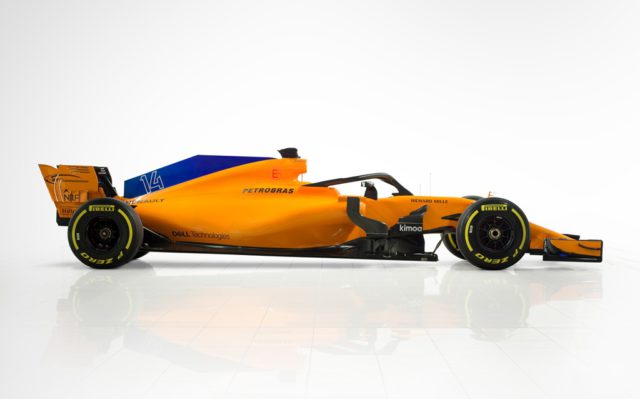The McLaren team points out that the McLaren MCL33 is a logical development of last year’s car. But it’s been developed and refined with the benefit of a year’s experience with the current regulations.
“With last year’s car, we had to commit to certain decisions about architecture based on what we knew at the time,” says Tim Goss, McLaren’s Chief Technical Officer – Chassis. “With a year of track learning behind us, we’ve used that understanding to adjust some architectural decisions. That means we’ve been able to revise all the sorts of things you bake into the chassis at the start of the year.”
“We’re definitely continuing along the same trajectory,” continues Goss
“For launch, the car will look evolutionary, and we will continue enhancing the MCL33 through testing and the race season.”
In terms of development, the design team has focused on refining the package; making it neater, simpler and more elegant.
“That’s always been an area of focus for us,” says Goss. “But, this year, we went beyond to get a neat and tidy packaging solution. And that just gives the aerodynamicists more scope to play with the bodywork.”
Creating that neat packaging has brought its fair share of challenges. Beneath the bodywork lies a new power unit with a significantly different philosophy to its predecessor.
“That change has been a big deal,” says Goss. “Even though the regulations state that the front and rear engine mounts need to be the same for every manufacturer, the layout of the engine, its architecture, is very different from before.”
“There are two families of engine out there; the Mercedes and Honda concept, with the compressor at the front of the engine, turbine at the back, MGU-H sat in the vee; and the Ferrari and Renault approach, where the turbocharger is at the back of the engine, and the MGU-H sits forwards into the vee.”
“Each of those approaches has its pros and cons, but I’m actually quite a big fan of the Renault approach. Making the switch had a big impact on the installation of the engine. The advantage of the Renault layout means that we can push the engine forwards, but then you have the compressor at the back of the engine, so you’ve got to get the outlet pipes forward without impacting the packaging.
“We had to redesign the back of the chassis, the gearbox bell-housing area, the rear suspension, and the cooling layout. That was two weeks of intense effort to get right. But it was something we were somewhat prepared for because we knew it might happen, and it’s amazing what people can do in such a short space of time when the chips are down and you’ve got a really clear mission.”
“So now we’ve got a really tidy packaging solution; the gearbox and rear suspension designers did an unbelievable job to redesign everything”
It’s a marker of the strength in depth of the department that it could incorporate such a fundamental change to the car so late into the design stage, and still deliver to plan.
“That’s because we’ve got a very tight-knit engineering group,” Goss explains. “There’s a very clear level of communication between us, so we could make quick and bold decisions, then just get on with it.”
Inspired by our history, driven by our future. Ladies and gentlemen, the McLaren #MCL33. https://t.co/6EYoGHxhf1 #BeBrave pic.twitter.com/yo9ebTU8ow
— McLaren (@McLarenF1) February 23, 2018

































